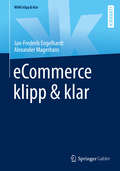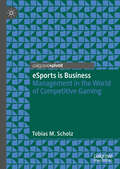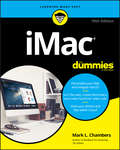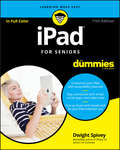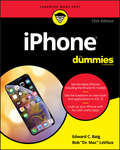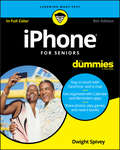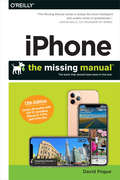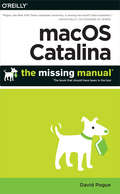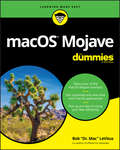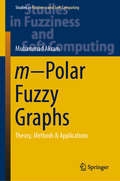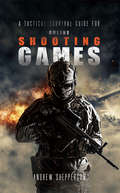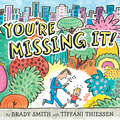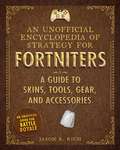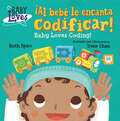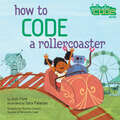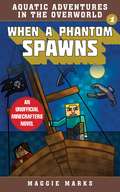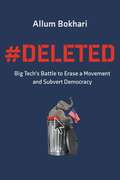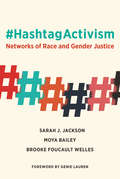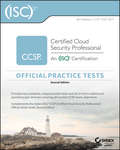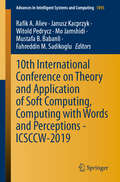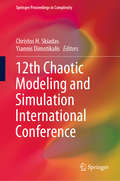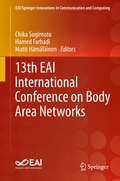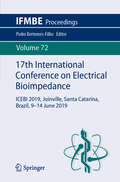- Table View
- List View
eCommerce klipp & klar (WiWi klipp & klar)
by Alexander Magerhans Jan-Frederik EngelhardtDieses Lehrbuch präsentiert eine Einführung und Vertiefung der wesentlichen Themenfelder des eCommerce. Der Fokus liegt dabei auf kundenzentrierten Aspekten, wie z.B. der Kundenzufriedenheit und -erwartung. Diese werden entlang einer Customer Journey systematisiert und ausgeführt. Neben Themen wie dem Kundenmanagement wird vor allem auch auf Onlineshops im eCommerce, insbesondere auf deren Gestaltungsmöglichkeiten, eingegangen. Dabei wird aufgezeigt, wie eine logische Wertschöpfung nach Gesetzen der Netzökonomie aussehen kann. Schließlich zeigen die Autoren die Erfolgsfaktoren des eCommerce auf, für die die bestmögliche Kenntnis des Kunden eine wesentliche Grundlage bildet. Das praxisorientierte Buch richtet sich an Studierende und auch Praktiker, die den eCommerce in Ihrem Unternehmen aktiv gestalten und entwickeln.
eSports is Business: Management in the World of Competitive Gaming
by Tobias M. ScholzThe global phenomenon of eSports has experienced exponential growth in recent years, gaining interest from the media, sports and technology industries. Being born digital, global and agile, competitive gaming appeals to a young and emerging audience, and therefore the management of businesses within the eSports industry requires a unique strategy. Presenting a short history of the industry and an overview of its various stakeholders, the author explores how important governing principles have emerged to culminate in a business model network. An insightful read for scholars researching innovation, eBusiness and strategy, this book takes a pioneering approach and examines potential implications for the future of eSports.
iMac For Dummies
by Mark L. ChambersThe perfect companion for iMac users You've got a great iMac, but now it's time to take things to the next level. This easy-to-use guide shows you how to do stuff like setting up and configuring your iMac along with fun stuff like using the Photos, Messages, and iMovie apps. You'll also discover how to get down to business with productivity apps like Numbers, Pages, and Keynote. Finally, you'll find help on how to sync everything to iCloud and stay organized with Family Sharing. Personalize your iMac and find your way around macOS X Surf the web, send Reminders, and make FaceTime video calls Store your photos and files with iCloud Discover tricks to become more efficient iMac newbies won’t want to be without this easy-to-follow companion guide!
iPad For Seniors For Dummies
by Dwight SpiveyGet caught up with the latest iPad features An iPad can be so many things: an entertainment hub, a way to stay in touch with the world, a productivity tool, and many other things. iPad For Seniors For Dummies focuses on helping iPad users who are experienced in life—but not in technology. In this friendly, easy-to-follow guide, you’ll find out how to fire up any model of iPad, connect to the internet, and use applications to play games, watch movies, listen to music, chat via video, update your social accounts, read the news, or just about anything else you'd want to do. Teach your iPad to answer your commands Stay connected with email, social apps, and video chat Cue up music and movies Find endless ways to let your iPad entertain you If you’re anywhere from 50 to 100 and want to find accessible guidance on making the most of your iPad, you’re in good hands!
iPhone For Dummies
by Edward C. Baig Bob LeVitusLooking for iPhone essentials? Look no further! When you carry an iPhone, you carry the power to get things done. Your pocket-sized device can keep you in touch with your friends, connect you to the world, maintain your schedule, access movies and music, and record your life in pictures and video. And that's just scratching the surface of what an iPhone can do! iPhone For Dummies offers the insight of two longtime Apple experts on how to master iPhone basics then move on to the coolest and most useful apps—and everything in between. Get coverage of the latest version of iPhone and iPhone Plus Get the lowdown on iOS X's tools and applications Load up your iPhone with fun and useful apps Fix common problems with ease If you’re new to the iPhone and want to take an approachable beginner’s boot camp, you’ve come to the right place!
iPhone For Seniors For Dummies
by Dwight SpiveyThe full-color guide to making the most of your iPhone The iPhone is a hugely popular smartphone that offers many convenient features, including a camera, turn-by-turn driving directions, a calendar, and more. But if you’re just adopting one for the first time, chances are you could use a friendly companion to help you make sense of its features. The easy-to-follow steps in this book will help you manage, personalize, and communicate using your new iPhone. With iPhone For Seniors For Dummies, you will discover how to do everything from shop online and organize appointments using iCal, to taking and sharing pictures and downloading and listening to your favorite music. Stay in touch with FaceTime and email Use iCal and Reminders to stay organized Share photos, play games, and read e-books Download and use apps There’s no better resource around for first-time, over-50 iPhone users!
iPhone: The Book That Should Have Been in the Box
by David PogueThe iPhone 11, 11 Pro, 11R, and 11Max are faster than ever and have more powerful cameras. With the latest edition of this bestselling guide, you get a funny, gorgeously illustrated guide to the tips, shortcuts, and workarounds that will turn you into an iPhone master.Written by David Pogue—Missing Manual series creator, New York Times columnist, and Emmy-winning tech correspondent for CNBC, CBS, and NPR—this update shows you everything you need to know about new iPhone features and the iOS 13 user interface. Pick up this beautiful full-color book and learn how to get the most out of your iPhone.
macOS Catalina: The Book That Should Have Been in the Box
by David PogueApple gives macOS new features and improvements right on your desktop and under the hood with Catalina—aka OS X 10.15. With this updated guide, you’ll learn how to use your iPad as a second screen, work with iPad apps on your Mac, and use Screen Time on your Mac. This new edition of the #1 bestselling Mac book shows you how to use the revamped apps for Music, Podcasts, and TV.Loaded with illustrations, step-by-step instructions, tips, and tricks, this book from David Pogue—Missing Manual series creator, New York Times columnist, and Emmy-winning tech correspondent for CNBC, CBS, and NPR—covers everything Catalina has to offer with lots of humor and technical insight.
macOS Mojave For Dummies
by Bob LeVitusPro tips for macOS from “Dr. Mac” Your shiny new iMac or trusty old MacBook both rely on macOS to help you get things done. It helps to have an equally reliable guidebook to steer you through the tasks and steps that make macOS run efficiently. This fun and friendly guide provides the direction you need to easily navigate macOS. Longtime expert Bob "Dr. Mac" LeVitus shares his years of experience to help you better understand macOS and make it a timesaving tool in your life. Take a tour of the macOS interface Get organized and save time with macOS applications Get pro tips on speeding up your Mac Back up your data with ease Covering the fundamentals of the OS and offering insight into the most common functions of macOS, this is indispensable reading for new or inexperienced macOS users.
m−Polar Fuzzy Graphs: Theory, Methods & Applications (Studies in Fuzziness and Soft Computing #371)
by Muhammad AkramThis book provides readers with an introduction to m-polar fuzzy graphs and m-polar fuzzy hypergraphs, covering both theories and applications. A special emphasis is given to m-polar fuzzy graphs at the aim of filling a gap in the literature, namely the absence of a mathematical approach to analyze multi-index, multipolar, and multi-attribute data. The book describes metrics and labeling in m-polar graphs, m-polar fuzzy matroids. It also discusses in detail important applications in decision-making problems and imaging processing. The book is expected to stimulate the curiosity of mathematics, computer scientists, and social scientists alike, and to provide both students and researchers with the necessary knowledge to understand and apply m−polar fuzzy graph theory.
A Tactical Survival Guide For Online Shooting Games
by Andrew SheppersonThis book has been written as a guide to help anyone struggling with online multiplayer First-Person Shooter (FPS) games or even if you just want to sharpen up your existing skills. By reading through the strategies, you should easily improve your game, and become a more formidable opponent. This book covers any potential problems you may encounter during FPS online play and incorporates generic techniques that you will be able to use in all FPS games regardless of their origin, timescale, control system or platform. The things that remain the same in all FPS are the basic tactics and techniques that are employed by some of the worlds best online gamers and some of the world's most formidable military powers. These are the superior tactics that you will be able to utilise in any FPS game you play and will keep you one step ahead of any player.
How to Talk to Your Computer (Let's-Read-and-Find-Out Science 2)
by Seymour SimonRead and find out about the basics of computer language in this colorfully illustrated nonfiction picture book.Have you ever wondered how to get a computer to do something? First you need to speak in a way it can understand! Read and find out all about how to talk to your computer in this updated edition with new illustrations and simple engaging text that introduces conditions, loops, and functions.How to Talk to Your Computer comes packed with visual aids like charts, sidebars, an infographic, and a computer-less coding activity. This updated 2019 edition was vetted by Dr. Justin Solomon, Assistant Professor at Massachusetts Institute of Technology.This is a clear and appealing science book for early elementary age kids, both at home and in the classroom. It's a Level 2 Let's-Read-and-Find-Out, which means the book explores more challenging concepts for children in the primary grades. The 100+ titles in this leading nonfiction series are:hands-on and visualacclaimed and trustedgreat for classroomsTop 10 reasons to love LRFOs:Entertain and educate at the same timeHave appealing, child-centered topicsDevelopmentally appropriate for emerging readersFocused; answering questions instead of using survey approachEmploy engaging picture book quality illustrationsUse simple charts and graphics to improve visual literacy skillsFeature hands-on activities to engage young scientistsMeet national science education standardsWritten/illustrated by award-winning authors/illustrators & vetted by an expert in the fieldOver 130 titles in print, meeting a wide range of kids' scientific interestsBooks in this series support the Common Core Learning Standards, Next Generation Science Standards, and the Science, Technology, Engineering, and Math (STEM) standards. Let's-Read-and-Find-Out is the winner of the American Association for the Advancement of Science/Subaru Science Books & Films Prize for Outstanding Science Series.
The Art of Dauntless
by Phoenix LabsMaster the hunt and forge your legend!Dauntless is a fresh take on the action-RPG genre, developed by industry veterans from Riot Games, BioWare, and other acclaimed studios. After a cataclysmic event, mankind survives in a harsh, yet majestic world of floating islands. Ferocious beasts known as Behemoths now stalk the earth. You are a Slayer, an elite warrior who risks life and limb hunting the Behemoth threat. On your journey, you'll forge an extraordinary arsenal of weapons and gear to overcome formidable challenges threatening our survival. Now, you have a unique opportunity to witness the creation of this magnificent epic like never before.Dark Horse Books and Phoenix Labs are thrilled to present the most intimate look at the development of the game with The Art of Dauntless, a meticulously curated tome full of hundreds of pieces of concept art each paired with exclusive commentary from the team that created it. You won't want to miss this unique opportunity to experience the Shattered Isles in a whole new way!
You're Missing It!
by Tiffani Thiessen Brady SmithA busy Hollywood couple spins a hilarious cautionary tale about what happens when you are glued to your phone.It's a lively day at the neighborhood park. Birds are singing, squirrels are frolicking, dogs are causing a commotion--and wide-eyed children are enthralled by it all. Too bad the parents are missing everything! It's going to take something really BIG to get them to disengage from their phones . . .This timely story, brought to life with beautiful bold art, is a great reminder to slow down and savor time together.
An Unofficial Encyclopedia of Strategy for Fortniters: A Guide To Fortnite Skins, Tools, Gear, And Accessories (Encyclopedia For Fortniters Ser. #1)
by Jason R. RichThe Ultimate Reference for Fortnite Gear and FashionAn Unofficial Encyclopedia of Strategy for Fortniters: A Guide to Skins, Tools, Gear, and Accessories will showcase some of the most popular, rare, limited-edition, and most outrageous outfits thus far released by Epic Games and demonstrate how these outfits can be combined with other optional and purely cosmetic items to truly personalize a character. As each outfit is showcased and described, along with its related accessory items, full-color screenshots will be used so readers can see what each outfit looks like, plus see a soldier wearing that outfit and using the related items within different in-game scenarios. As these scenarios are shown, readers will discover game-play tips and strategies they can utilize when playing Fortnite Battle Royale on any compatible gaming system. Showcase all the ways a gamer can customize their characterExplore how to unlock tools and free loot items by completing in-game challengesMake your character look unique and amazing, while taking advantage of the optional items offered within the game. Learn how to unlock emotes and when (and how) to use them within the game to showcase attitude and personality during each match
¡Al bebé le encanta codificar! (Baby Loves Science)
by Ruth SpiroNow available in Spanish bilingual editions, this best-selling series offers big, brainy science for the littlest listeners.Accurate enough to satisfy an expert, yet simple enough for baby, this clever board book showcases the use of logic, sequence, and patterns to solve problems. Can Baby think like a coder to fix her train? Beautiful, visually stimulating illustrations complement age-appropriate language to encourage baby's sense of wonder. Parents and caregivers may learn a thing or two, as well!Author's Note:The goal of the Baby Loves Science books is to introduce STEM topics in a developmentally appropriate way. As a precursor to learning programming languages and syntax, Baby Loves Coding presents the concepts of sequencing, problem solving, cause and effect, and thinking step-by-step. Practicing these skills early creates a solid foundation for reading, writing, math and eventually, programming.
How to Code a Rollercoaster
by Josh FunkPearl and Pascal take their coding adventures to the amusement park in this follow-up picture book from our Girls Who Code program!Pearl and her trusty rust-proof robot, Pascal, are enjoying a day out at the amusement park. Spinning teacups, ice cream, and of course: rollercoasters! Through the use of code, Pearl and Pascal can keep track of their ride tokens and calculate when the line is short enough to get a spot on the biggest ride of them all--the Python Coaster. Variables, if-then-else sequences, and a hunt for a secret hidden code make this a humorous, code-tastic day at the amusement park!
When a Phantom Spawns: An Unofficial Minecrafters Novel (Aquatic Adventures in the Overworld #1)
by Maggie MarksA brand-new series about the underwater world of Minecraft! Brothers Mason and Asher have only ever known the comfort of dry land in the Overworld. But when a terrifying shipwreck leaves them stranded, their new friend Luna urges them to safe haven—underwater. In each story of the all-new series for Minecrafters, Aquatic Adventures in the Overworld, this unlikely trio must make the choice of staying in the world they know best and risk death, or voyaging into an unknown world where anything could happen. Follow their journey as Mason, Asher, and Luna face incredible obstacles and discover strength they never knew they had in Aquatic Adventures in the Overworld. In their first aquatic adventure, Mason and his brother, Asher, wake to find themselves shipwrecked on a deserted beach. Where are they? How’d they get here? And how will they survive? They’ve lost their map, and now Mason is losing sleep, too. Are those phantoms swirling overhead, waiting to strike? A new friend, Luna, urges the brothers to follow her underwater to the safety of the ocean floor—before it’s too late. . .
#DELETED: Big Tech's Battle to Erase a Movement and Subvert Democracy
by Allum BokhariThe most powerful tech companies in the world are determined to stop Donald Trump.Journalist Allum Bokhari has spent four years investigating the tech giants that dominate the Internet: Google, Facebook, YouTube, Twitter. He has discovered a dark plot to seize control of the flow of information, and utilize that power to its full extent - to censor, manipulate, and ultimately sway the outcome of democratic elections. His network of whistleblowers inside Google, Facebook and other companies explain how the tech giants now see themselves as "good censors," benevolent commissars controlling the information we receive to "protect" us from "dangerous" speech.They reveal secret methods to covertly manipulate online information without us ever being aware of it, explaining how tech companies can use big data to target undecided voters. They lift the lid on a plot four years in the making - a plot to use the power of technology to stop Donald Trump's re-election.
#HashtagActivism: Networks of Race and Gender Justice
by Sarah J. Jackson Moya Bailey Brooke Foucault WellesHow marginalized groups use Twitter to advance counter-narratives, preempt political spin, and build diverse networks of dissent. The power of hashtag activism became clear in 2011, when #IranElection served as an organizing tool for Iranians protesting a disputed election and offered a global audience a front-row seat to a nascent revolution. Since then, activists have used a variety of hashtags, including #JusticeForTrayvon, #BlackLivesMatter, #YesAllWomen, and #MeToo to advocate, mobilize, and communicate. In this book, Sarah Jackson, Moya Bailey, and Brooke Foucault Welles explore how and why Twitter has become an important platform for historically disenfranchised populations, including Black Americans, women, and transgender people. They show how marginalized groups, long excluded from elite media spaces, have used Twitter hashtags to advance counternarratives, preempt political spin, and build diverse networks of dissent. The authors describe how such hashtags as #MeToo, #SurvivorPrivilege, and #WhyIStayed have challenged the conventional understanding of gendered violence; examine the voices and narratives of Black feminism enabled by #FastTailedGirls, #YouOKSis, and #SayHerName; and explore the creation and use of #GirlsLikeUs, a network of transgender women. They investigate the digital signatures of the “new civil rights movement”—the online activism, storytelling, and strategy-building that set the stage for #BlackLivesMatter—and recount the spread of racial justice hashtags after the killing of Michael Brown in Ferguson, Missouri, and other high-profile incidents of killings by police. Finally, they consider hashtag created by allies, including #AllMenCan and #CrimingWhileWhite.
(ISC)2 CCSP Certified Cloud Security Professional Official Practice Tests
by Ben MalisowThe only official CCSP practice test product endorsed by (ISC)² With over 1,000 practice questions, this book gives you the opportunity to test your level of understanding and gauge your readiness for the Certified Cloud Security Professional (CCSP) exam long before the big day. These questions cover 100% of the CCSP exam domains, and include answers with full explanations to help you understand the reasoning and approach for each. Logical organization by domain allows you to practice only the areas you need to bring you up to par, without wasting precious time on topics you’ve already mastered. As the only official practice test product for the CCSP exam endorsed by (ISC)², this essential resource is your best bet for gaining a thorough understanding of the topic. It also illustrates the relative importance of each domain, helping you plan your remaining study time so you can go into the exam fully confident in your knowledge. When you’re ready, two practice exams allow you to simulate the exam day experience and apply your own test-taking strategies with domains given in proportion to the real thing. The online learning environment and practice exams are the perfect way to prepare, and make your progress easy to track.
10th International Conference on Theory and Application of Soft Computing, Computing with Words and Perceptions - ICSCCW-2019 (Advances in Intelligent Systems and Computing #1095)
by Witold Pedrycz Janusz Kacprzyk Mo Jamshidi Rafik A. Aliev Fahreddin M. Sadikoglu Mustafa B. BabanliThis book presents the proceedings of the 10th Conference on Theory and Applications of Soft Computing, Computing with Words and Perceptions, ICSCCW 2019, held in Prague, Czech Republic, on August 27–28, 2019. It includes contributions from diverse areas of soft computing and computing with words, such as uncertain computation, decision-making under imperfect information, neuro-fuzzy approaches, deep learning, natural language processing, and others. The topics of the papers include theory and applications of soft computing, information granulation, computing with words, computing with perceptions, image processing with soft computing, probabilistic reasoning, intelligent control, machine learning, fuzzy logic in data analytics and data mining, evolutionary computing, chaotic systems, soft computing in business, economics and finance, fuzzy logic and soft computing in earth sciences, fuzzy logic and soft computing in engineering, fuzzy logic and soft computing in material sciences, soft computing in medicine, biomedical engineering, and pharmaceutical sciences. Showcasing new ideas in the field of theories of soft computing and computing with words and their applications in economics, business, industry, education, medicine, earth sciences, and other fields, it promotes the development and implementation of these paradigms in various real-world contexts. This book is a useful guide for academics, practitioners and graduates.
12th Chaotic Modeling and Simulation International Conference (Springer Proceedings in Complexity)
by Christos H. Skiadas Yiannis DimotikalisGathering the proceedings of the 12th CHAOS2019 International Conference, this book highlights recent developments in nonlinear, dynamical and complex systems. The conference was intended to provide an essential forum for Scientists and Engineers to exchange ideas, methods, and techniques in the field of Nonlinear Dynamics, Chaos, Fractals and their applications in General Science and the Engineering Sciences. The respective chapters address key methods, empirical data and computer techniques, as well as major theoretical advances in the applied nonlinear field. Beyond showcasing the state of the art, the book will help academic and industrial researchers alike apply chaotic theory in their studies.
13th EAI International Conference on Body Area Networks (EAI/Springer Innovations in Communication and Computing)
by Matti Hämäläinen Chika Sugimoto Hamed FarhadiThe papers in this proceeding discuss current and future trends in wearable communications and personal health management through the use of wireless body area networks (WBAN). The authors posit new technologies that can provide trustworthy communications mechanisms from the user to medical health databases. The authors discuss not only on-body devices, but also technologies providing information in-body. Also discussed are dependable communications combined with accurate localization and behavior analysis, which will benefit WBAN technology and make the healthcare processes more effective. The papers were presented at the 13th EAI International Conference on Body Area Networks (BODYNETS 2018), Oulu, Finland, 02-03 October 2018.
17th International Conference on Electrical Bioimpedance: ICEBI 2019, Joinville, Santa Catarina, Brazil, 9-14 June 2019 (IFMBE Proceedings #72)
by Pedro Bertemes-FilhoThis book gathers the proceedings of the 17th International Conference on Electrical Bioimpedance (ICEBI 2019), held on June 9-14, in Joinville, Santa Catarina, Brazil. The chapters cover the latest knowledge and developments concerning: sensors and instrumentation to measure bioimpendance, bioimpedance imaging techniques, theory and modeling and bioimpendance, as well as cutting-edge clinical applications of bioimpendance. All in all, this book provides graduate students and researchers with an extensive and timely snapshot of current research and challenges in the field of electrical bioimpendance, and a source of inspiration for future research and cross-disciplinary collaborations.
